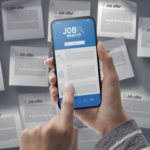Ever wonder if people are more likely to call in sick at specific times during the year? If so, you can stop wondering. We’re going to share the latest research showing the most common dates for sick leave, along with the most common reasons people use for calling in sick, how most employees notify their boss when they’re unwell, and what we can learn from all of this.
Which Dates Have the Highest Number of Sick Days Taken?
Research conducted by Flamingo found the top ten “sickest days of the year” in the US; the days that saw the highest number of sick days taken on average. They were as follows:
- 24th August
- 13th February
- 25th October
- 15th December
- 18th April
- 2nd February
- 24th January
- 26th June
- 12th December
- 5th September
Overall, February appears to be the “sickest month”. On average, 10% of US businesses’ employees are sick at some time during the month of February.
Is There a Pattern to the Most Common Days for Sick Leave?
There doesn’t appear to be any obvious patterns when we analyze the most common days for sick leave throughout the year.
Some would expect that the winter months would be busier, due to the cold and flu season. Yet while February is the sickest month overall, the ten sickest days are spread throughout the year.
The sickest day of the year, August 24th, falls in late summer, where you would not naturally expect a large amount of illnesses.
How Much Sick Leave is Normal?
Data from Statista shows that 26% of people in school or university in the US (aged between 18 and 65) did not take a sick day in 2022.
21% of people took between 1-3 sick days and 18% took between 4 and 10 days. 5% of people in the US took over 20 days of sick leave.
This data shows that there’s a wide spread when it comes to how much sick leave the average person takes, yet it strongly leans towards the lower end, with nearly half of Americans taking 3 or fewer days of sick leave in the last year.
Why People Most Commonly Call in Sick
As part of Flamingo’s research into the most common days for sick leave, the most common reasons for sick leave were uncovered.
The majority in this dataset was due to stomach issues, covering 54% of cases. Other results were as follows:
- COVID-19 (confirmed, suspected or precautionary cases): 25%
- Issues relating to stress and anxiety: 9%
- Injuries: 6%
- Other: 6%
Is Calling in Sick a Misnomer?
The final piece of sick leave-related data looked at how most people give notice that they’re unwell and can’t come to work.
It found that 54% of people text in sick, through either SMS or instant messaging channels like Slack or WhatsApp.
33% of people still call in sick via voice call, while 12% notify their boss that they’re taking sick leave through email.
5 Takeaways for Employers About the Current State of Sick Leave
The data above shines some light on a few trends and commonalities to do with sick leave in the United States. But what exactly does that mean, if anything, for employers?
Here are five things to take away from this sick leave data.
More People Are Taking Sick Days
Though some might find it surprising that over a quarter of people didn’t take sick leave in the last year, this number is actually going down.
A year earlier, approximately one third of Americans hadn’t taken a sick day in the past 12 months.
This shows that sick leave is becoming more common. This could be due to COVID lockdowns ending and more people returning to the office. Those working from home tend to take fewer sick days than their office-based counterparts.
Sick Days Happen Throughout the Year
Possibly the biggest takeaway is that sick days happen all throughout the year. Employers should understand this; don’t expect bouts of sickness only during the winter months.
It’s important to have procedures in place to manage sickness-related absences when they happen, no matter when. Employees need this time to rest and recover, and the business needs to keep going in their absence.
Texting in Sick is the Norm
Actually “calling” in sick is going the way of the VHS and dial-up internet.
Approximately two thirds of people text, message or email their boss when they need to take a sick day. Once upon a time this would have been seen as rude, disrespectful, and against most company policies. But it’s time to adjust.
Communicating via instant messaging channels is much more normal now, and shouldn’t be considered informal or rude. This also makes it easier on employees, as they don’t need to muster up the energy to call and talk to someone when they’re feeling less than one hundred percent.
Sick Days Can be Reduced by Better Eating Habits
Though sick days are a normal thing, and employees shouldn’t be looked down upon for requesting sick leave, it’s still in the best interest of all parties to reduce the amount of sick days taken.
This reduces expense for the company, and for the employee, it means they’re living a healthier and more comfortable life.
The good news is that the majority of sickness absences are due to stomach conditions, which can be improved through better eating habits and nutrition.
Employers should look to educate and support their employees to eat better and as a result live healthier lives. Provide guidance in orientation that educates employees on the importance of healthy nutrition, and provide healthy snacks and lunches in the office to further promote healthy living and cut down on gastrointestinal illnesses.
Employers Need to Help Employees Manage Stress and Anxiety
While stress and anxiety only account for nine percent of sickness absences, this still puts the total number of absences per year in the millions.
That means a lot of absences can be prevented by helping employees manage their mental health. This should be a key focus for companies today; managing employees’ workloads, providing them with a safe, inclusive and engaging work environment, and avoiding burnout.
Not only does this mean lower absence rates, but companies that make positive mental health a priority will have happier and more productive staff, with lower turnover rates and higher engagement among employees.
When it comes to sicknesses in the workplace, you can’t ignore mental health and stress-related illnesses.
Every employer can benefit from a more healthy workplace. That starts with making paid sick leave available to employees to allow them to rest and recover, and continues with proactive steps to help your team stay healthy, both physically and mentally.









